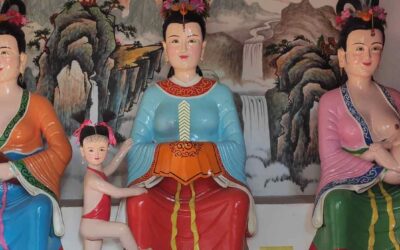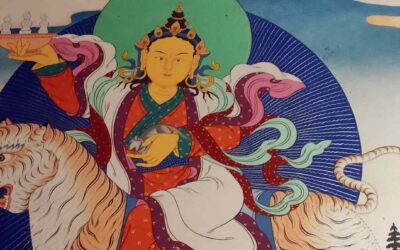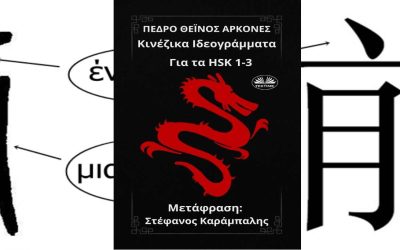The tragedy of the beauty Wang Zhaojun
Emperor Yuan (48–33 BCE) had a large harem and could not meet with all the palace women regularly. Therefore, he ordered painters to create portraits of them, and he would summon them for favors based on these portraits. Most of the palace women bribed the painters, offering as much as 100,000 coins, while even the smallest bribe was no less than 50,000 coins. However, Wang Qiang (Zhaojun) refused to bribe the painters and thus was never summoned.
Later, when the Xiongnu ruler came to pay tribute to the Han court and requested a beautiful woman to be his consort, the emperor referred to the portraits and selected Wang Zhaojun to be sent to him. On the day of her departure, she was summoned to appear before the emperor. Her beauty was unmatched among the palace women, and she excelled in conversation and carried herself with grace and elegance. The emperor regretted his decision, but her name had already been recorded, and the emperor valued his credibility with foreign nations, so he did not change the arrangement.
The emperor then thoroughly investigated the matter, and all the painters were executed in the marketplace. Their confiscated family assets amounted to enormous sums. Among the painters was Mao Yanshou from Du Ling, who was skilled at capturing the essence of a person’s appearance, whether they were beautiful or ugly, young or old, ensuring their true likeness. Chen Chang from An Ling, Liu Bai and Gong Kuan from Xin Feng were also skilled painters, specializing in depictions of animals such as oxen, horses, and birds in flight. However, their ability to depict human figures fell short of Mao Yanshou’s talent. Yang Wang from Xia Du was another talented painter, especially skilled in applying colors, as was Fan Yu. All were executed on the same day. After this incident, there were very few skilled painters left in the capital.
— Ge Hong, Miscellaneous Records of the Western Capital
Notes:
- The Han Dynasty (206 BCE–220 CE) is considered a golden age in Chinese history, marked by significant advancements in politics, economics, technology, and culture. Emperor Yuan’s reign falls within the Western Han period (206 BCE–9 CE), with the capital at Chang’an (modern Xi’an). Emperor Yuan was known for his strong support of Confucianism, appointing Confucian scholars to important government positions. He aimed to govern based on Confucian principles of virtue and social order. Its reign however was marked by factionalism among officials, leading to political infighting, and corruption within the government.
- The Xiongnu were a nomadic people who dominated the steppes north of China for centuries, particularly during the Han Dynasty. Their society was highly mobile, centered on pastoralism, with a reliance on horses and livestock. Organized into a hierarchical structure led by a Chanyu, their military prowess was formidable. Skilled horsemen and archers, they posed a constant threat to the sedentary agricultural Chinese. Raids into Han territories for resources and captives were frequent, leading to ongoing conflicts.
- The imperial harem of Han Dynasty China was a complex and hierarchical system designed to serve the emperor both personally and politically. It was a microcosm of the imperial court, filled with women of various ranks, each with specific duties and aspirations. At its core, the harem’s purpose was to provide the emperor with consorts to bear imperial heirs, ensuring the dynasty’s continuation. Women entered the harem through various means, including selections based on family background and beauty.
The harem was strictly organized, with ranks indicating a woman’s status and influence. The Empress held the highest position, followed by various concubines and attendants. Women’s lives within the harem were often governed by strict rules and rituals, with their fortunes tied to the emperor’s favor. Beyond their personal relationship with the emperor, women in the harem could wield significant political influence, particularly if they bore a son who became heir apparent. Factionalism and competition were common, as women sought to advance their own positions and those of their families. The harem was a world of both luxury and constraint, where women navigated complex social dynamics in pursuit of power and security.
- Wang Zhaojun, a figure of immense historical and cultural significance, stands as one of the «Four Beauties» of ancient China. Her story, woven with elements of political strategy and personal sacrifice, has resonated through centuries of Chinese art and literature. During the Western Han Dynasty, Wang Zhaojun entered the imperial harem of Emperor Yuan. However, due to her refusal to bribe the court painter, her portrait was rendered unflatteringly. Consequently, she remained overlooked by the emperor.
When the Xiongnu chieftain Huhanye sought a Han bride to solidify peace, Wang Zhaojun was chosen. It was only upon her departure that the emperor recognized her true beauty, a realization that filled him with regret. Her journey to the Xiongnu lands became a symbol of both sorrow and national interest. Legends depict her playing the pipa, its mournful melodies causing even birds to fall from the sky. Her marriage to Huhanye, and later, following Xiongnu custom, to his successor, aimed to foster stability between the Han and Xiongnu empires. Wang Zhaojun’s tale has been immortalized in poetry, plays, and art, evolving from a narrative of personal tragedy to one of patriotic heroism. She represents a complex interplay of beauty, politics, and cultural exchange, leaving an enduring mark on Chinese history.
Last posts
Sexual aspects of Gu venom
Gu illness resulted from a contamination by gu poison, which a recent analyst has characterized as “an alien evil spirit which entered [the] body and developed into worms or some similar animal that gnawed away at the intestines or genitalia.” This poison was thought...
Sunset in Dali
No Words Fuxing Rd from the South Gate. Dali, Yunnan.Corner in Fuxing Rd, Dali, Yunnan.Night market at the south of the South Gate. Dali. YunnanLast posts
The five secret temples of the lamas in Lijiang
The five secret temples of the lamas in Lijiang Religions of Lijiang Although the city of Lijiang is known primarily for the Dongba religion practiced by the traditional shamans of the Naxi, also called Dongba, who with their rituals administered the religious and...
The Local Lords cult of the Bai nationality
The worship of the Local Lords (benzhu) is the most characteristic of the Bai people. Their religious life revolves around the Benzhu temple of each village, as each village venerates a local lord, sometimes a historical figure who sacrificed for the people. In other...
Zhang Yongzheng, the master of deluding reality
Zhang Yongzheng, the master of deluding reality Reality is an illusion, say Buddhist texts. And each of Zhang Yonggzheng's (Gansu, 1978) works plays with this concept to remind us again and again that there is no immutable reality but a fluid universe of forms that...
The book Hanzi for HSK 1-3 now available in Greek language
The book “Hanzi for HSK 1-3” now available in Greek language This April, the translation of my book Hanzi for HSK 1-3 has been published in the main digital bookstores in Greece. The Greek version of this book, from the pen of Stefanos Karampalis, has been one of...









